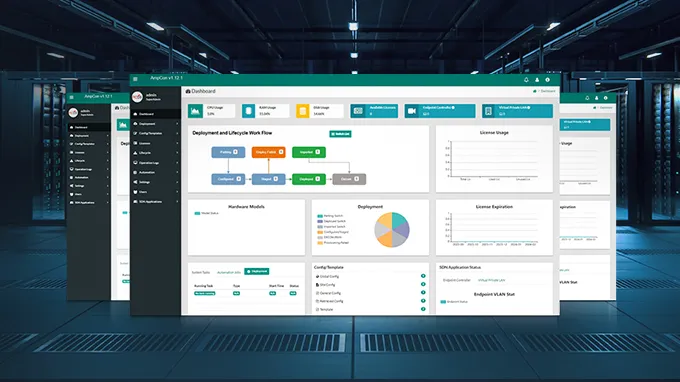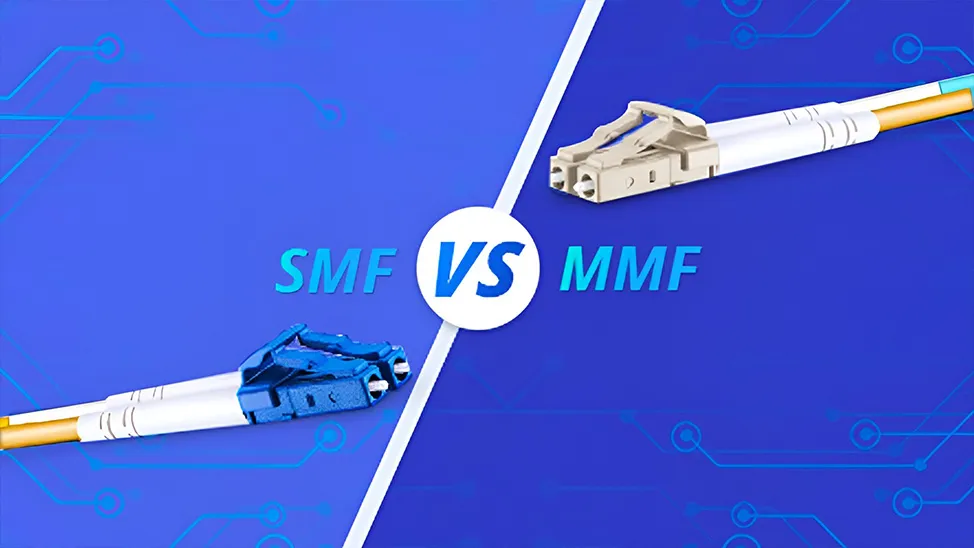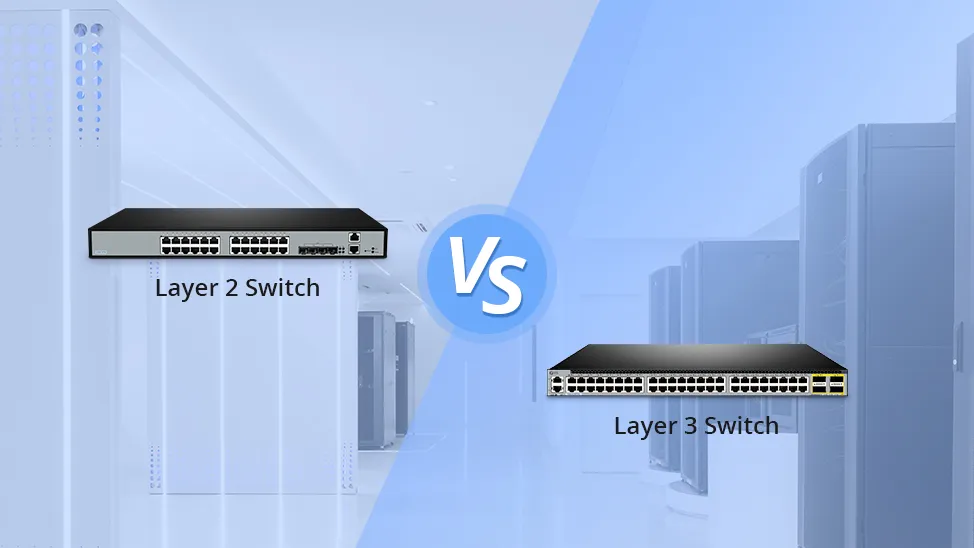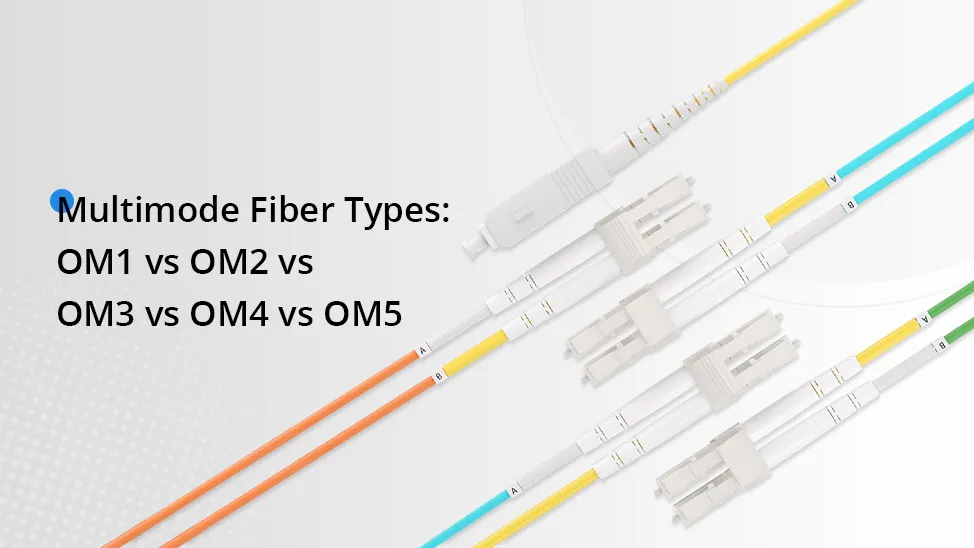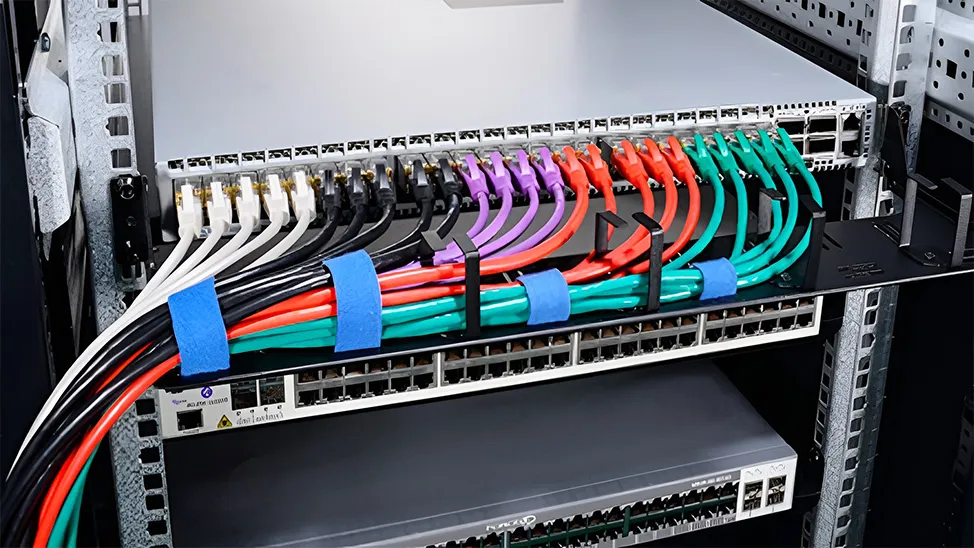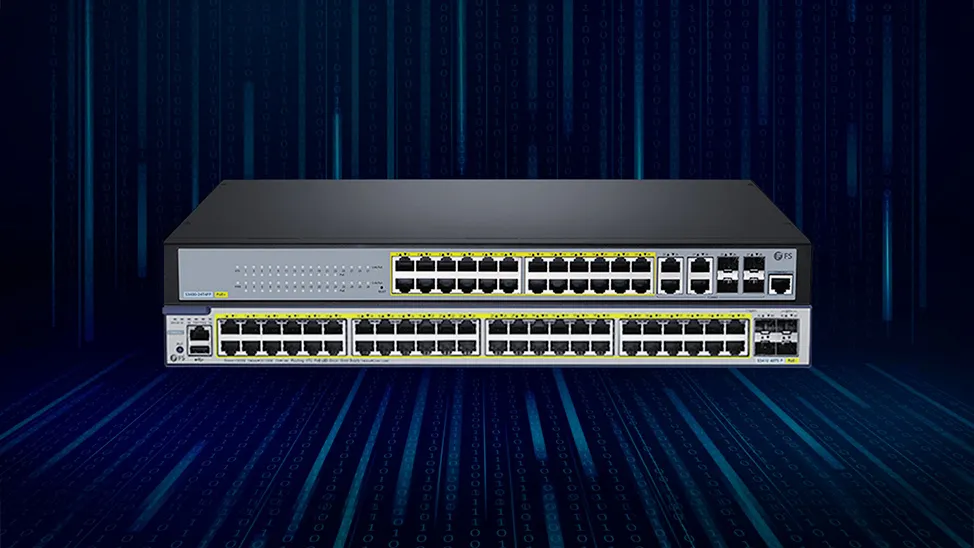Understanding PoE Standards and Wattage
In the intricate world of modern networking, integrating a PoE switch has elevated the indispensability of PoE technology, allowing both power and data transmission through a single cable to devices such as IP cameras, VoIP phones, wireless access points, and more. Understanding PoE standards, along with the wattage requirements, becomes crucial for network engineers, IT professionals, and business owners who strive for a streamlined, efficient, and cost-effective network infrastructure by leveraging the capabilities of PoE switches.
PoE Standards Introduction
PoE standards come in three types: IEEE 802.3af, IEEE 802.3at, and IEEE 802.3bt. These standards define the minimum power that Power Sourcing Equipment (PSE) can deliver and the maximum power that Powered Devices (PD) will expect to receive.

1. IEEE 802.3af (Standard PoE)
Operating within a voltage range of 44-57V and delivering a current of 10-350mA, IEEE 802.3af provides a maximum power output of 15.4W per port. Due to Ethernet cable power loss, the minimum guaranteed power available at the PD is 12.95W per port. This standard supports devices like VoIP phones and sensors.
2. IEEE 802.3at (PoE+)
As an updated standard, PoE+ is backward-compatible with IEEE 802.3af. It operates with a supply voltage ranging from 50V to 57V and a supply current of 10-600mA. PoE+ delivers up to 30W of power on each PSE port, ensuring a minimum power output of 25W per port. This standard is suitable for devices like wireless access points and video conferencing systems.
3. IEEE 802.3bt
IEEE 802.3bt is the latest PoE standard that defines two types of powering/wattage standards - Type 3 and Type 4. They will increase the maximum PoE power by delivering more power through two or more pairs of Ethernet cables. In Type 3 and Type 4 modes, PSEs will identify the PDs and allocate power based on the maximum power requirement of the PDs, resulting in an enhanced power delivery system. The standard will include support for 2.5GBASE-T, 5GBASE-T, and 10GBASE-T while existing standards have a maximum speed of 1-Gbps. It's designed for demanding applications such as laptops and LED lighting.
a. Type 3 (PoE++)
Type 3, also known as PoE++, can provide up to 60W per PoE port (ensuring a minimum of 51W on each PD port). It's suitable for powering devices such as video conferencing systems components.
b. Type 4 (Higher-Power PoE)
Type 4 offers a maximum power output of 100W per PoE port (with a minimum of 71W on each PD port). This level of power delivery is ideal for devices like laptops and TVs.
Both the two modes of IEEE 802.3bt are backward compatible with 802.3af and 802.3at. The following table concludes the specifications of the PoE standards, including PoE wattage.
| Name | IEEE Standard | PD Min. Power Per Port | PSE Max. Power Per Port | Energized Pairs | Supported Devices |
| PoE | IEEE 802.3af | 12.95W | 15.4W |
2-pair
|
Static surveillance cameras, VolP phones, wireless access points
|
|
PoE+
|
IEEE 802.3at | 25W | 30W |
2-pair
|
PTZ cameras, video IP phones, alarm systems
|
|
PoE++
|
IEEE 802.3bt | 51W |
60W
|
4-pair
|
Video conferencing equipment, multi-radio wireless access points
|
| 4PPoE | IEEE 802.3bt | 71W |
90W
|
4-pair
|
Laptops, flat screens
|
Understanding PoE Wattage
As mentioned above, IEEE 802.3af delivers a maximum of 15.4W per port, while PoE+ supports up to 30W. The challenge arises when planning to connect multiple devices to a single PoE/PoE+ switch. It's essential to ensure that the total power requirements of these devices do not exceed the switch's maximum power wattage.
For example, let's consider the FS S3410-48TS-P, a managed PoE+ switch with 48 RJ45 ports and 4 SFP ports. Compliant with IEEE 802.3af/at standards, this switch has a total power budget of 740W. This ample budget means it can concurrently power devices compliant with PoE standards across all 48 ports if each requires 15.4W (15.4W x 48 = 739.2W, which is just below 740W). Additionally, it can support up to 24 devices compliant with the PoE+ standard (30W x 24 = 720W), all while staying within its power budget.

There's no need to worry about power management with modern network switches like the FS S3410-48TS-P. They are equipped with intelligent technology to automatically detect whether a connected device is compatible with PoE or PoE+. If a PoE-enabled device requires as little as 5W, the switch accurately delivers it. Should the device demand more power, up to 20W or beyond within its PoE+ capability, the switch will adjust accordingly. However, for devices not needing PoE, the switch simply functions to pass data, ensuring versatility in network configurations and device support.
How Much PoE Wattages Are Needed?
The power needs of your devices depend on what you're connecting. Most devices, such as security cameras, IP phones and standard wireless APs, require no more than 30 watts.
However, some devices, like 802.11ac wireless APs with multiple USB ports and radios, need over 30 watts for peak performance. For these cases, PoE++ or PoH switches are the solution. Keep in mind that some devices can adapt to lower power availability by using fewer radios or disabling features.
Leveraging FS PoE Switches for Optimal Power Delivery
In the context of adhering to PoE standards and efficiently managing wattage requirements, FS PoE+ switches stand out as a prime example of technological advancement aimed at optimizing power distribution in network infrastructures. These switches are designed to seamlessly integrate with devices adhering to various PoE standards, ensuring that each device receives the precise amount of power required for optimal performance.
FS PoE switches embody the essence of adaptability and power efficiency. They are meticulously engineered to support the full spectrum of PoE standards—IEEE 802.3af, IEEE 802.3at, and the latest IEEE 802.3bt, including both Type 3 (PoE++) and Type 4 (Higher-Power PoE). This compatibility ensures that regardless of the connected device's power demands, from the modest needs of an IP phone to the more substantial requirements of a high-powered laptop, the switch is capable of intelligently identifying and supplying the necessary wattage. The following table lists the specifications of FS PoE+ switches and PoE++ switches.
| Model | PoE Standard | Port | Switch Capacity | Power Budget | Forwarding Rate | Fans |
Management Layer
|
|---|---|---|---|---|---|---|---|
| IEEE 802.3af/at |
8x 10/100/1000BASE-T RJ45 | 2x 1G SFP
|
20 Gbps | 130W | 15 Mpps |
Fanless
|
L2+
|
|
|
|
IEEE 802.3af/at |
24x 10/100/1000BASE-T RJ45, 2x 1G RJ45/SFP Combo | 2x 1G/10G SFP+
|
128 Gbps | 740W | 96 Mpps |
2 Built-in Fans
|
L2+
|
|
|
IEEE 802.3af/at/bt |
48x 100M/1000M/2.5G/5G/10GBase-T, 4x 10G/25G SFP28 | 2x 40G QSFP+
|
1.32 Tbps
|
1600W | 982 Mpps |
2+1 Smart Fans
|
L3
|
Summary
Understanding PoE standards and wattage is crucial for efficient device connections. By matching your device's power requirements with the right PoE standard, you ensure seamless operation. PoE technology simplifies complex cabling and provides flexibility in power delivery.
Related Article:
Demystifying PoE Network: Features, Standards, Types, and Common FAQs
You might be interested in
Email Address

-
PoE vs PoE+ vs PoE++ Switch: How to Choose?
May 30, 2024









